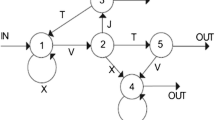Abstract
Some research on literacy acquisition suggests that implicit learning processes may be related to reading and writing proficiency in English, which is a deep orthography. However, little research has been done to determine if the same is true in shallow orthographies. Here, we investigated whether the implicit learning ability of third grade Spanish speaking children was related to their reading and writing abilities. Twenty eight children viewed pseudowords which all adhered to untaught graphotactic rules and were later assessed to determine their implicit learning of these rules. The children’s reading and writing abilities were also assessed using standardized tests. No correlations were found between the participants’ level of implicit learning and their performance on reading tasks or on a pseudoword writing task, suggesting that implicit learning is not strongly related to the acquisition of phonological regularities in a shallow orthography. A correlation was found between recognition of previously seen exemplars and the ability to spell inconsistent words which require word specific knowledge to resolve the spelling inconsistencies. This result suggests that implicit learning mechanisms may play a role in the acquisition of lexical knowledge and thus, in writing proficiency.
Similar content being viewed by others
Notes
This essentially reduced the number of trials in the test phase from 48 to 32, and this was done to reduce the possibility of participant fatigue during the test phase. Items were selected such that, for each group of 3 participants, all 24 legal and 24 illegal items were used twice each.
References
Arciuli, J., & Simpson, I. C. (2012). Statistical learning is related to reading ability in children and adults. Cognitive Science, 36(2), 286–304. doi:10.1111/j.1551-6709.2011.01200.x.
Chambers, K. E., Onishi, K., & Fisher, C. (2003). Infants learn phonotactic regularities from brief auditory experience. Cognition, 87, B69–B77. doi:10.1016/S0010-0277(02)00233-0.
Cohen, J. (1988). Statistical power analysis for the behavioral sciences (2nd ed.). Hillsdale, NJ: LEA.
Cuetos Vega, F., Ramos Sánchez, J. L., & Ruano Hernández, E. (2004). PROESC: Assessment of writing processes. Madrid: TEA.
Defior Citoler, S., Fonseca, L., Gottheil, B., Aldrey, A., Jiménez Fernández, G., Pujals, M., et al. (2006). LEE: Reading and writing test in Spanish. Buenos Aires: Paidós.
Faul, F., Erdfelder, E., Lang, A. G., & Buchner, A. (2007). G*Power 3: A flexible statistical power analysis program for the social, behavioral, and biomedical sciences. Behavior Research Methods, 39(2), 175–191. doi:10.3758/BF03193146.
Pacton, S., Fayol, M., & Perruchet, P. (2005). Children’s implicit learning of graphotactic and morphological regularities. Child Development, 76(2), 324–339. doi:10.1111/j.1467-8624.2005.00848_a.x.
Pacton, S., Perruchet, P., Fayol, M., & Cleeremans, A. (2001). Implicit learning out of the lab: The case of orthographic regularities. Journal of Experimental Psychology: General, 130(3), 401–426. doi:10.1037/0096-3445.130.3.401.
Raven, J., Court, J., & Raven, J. (1996). Manual for Raven’s progressive matrices. Madrid: TEA.
Saffran, J. R., Aslin, R. N., & Newport, E. L. (1996). Statistical learning by 8-month-old infants. Science, New Series, 274, 1926–1928. doi:10.1126/science.274.5294.1926.
Schneider, W., Eschman, A., & Zuccolotto, A. (2002). E-Prime 2.0 software. Pittsburgh: Psychology Software Tools Inc.
Sperling, A. J., Lu, Z. L., & Manis, F. R. (2004). Slower implicit categorical learning in adult poor readers. Annals of Dyslexia, 54(2), 281–303. doi:10.1007/s11881-004-0014-z.
Steffler, D. J. (2004). An investigation of grade 5 children’s knowledge of the doubling rule in spelling. Journal of Research in Reading, 27(3), 248–264. doi:10.1111/j.1467-9817.2004.00230.x.
Thurstone, L., & Yela, M. (1995). Faces, perception of differences. Madrid: TEA.
Treiman, R. (1993). Beginning to spell: A study of first-grade children. New York: Oxford University Press.
Wechsler, D. (1999). WISC-R: Weschler Children Intelligence Scale—Revised edition. Madrid: TEA.
Wilkinson, G. S. (1993). WRAT-3: Wide Range achievement test (3rd ed.). Wilmington, Delaware: Wide Range Inc.
Acknowledgments
This work was supported by the European Commission, FP7-People 2007, Marie-Curie Actions (Initial Training Network 215961), the Spanish Ministry of Science and Innovation (project PSI2010-21983-C02-01) and by research group HUM-820, of the Regional Government of Andalusia. We thank “Ave María La Quinta” School for their generous participation in this study.
Author information
Authors and Affiliations
Corresponding author
Appendix: Items from the Exposure Phase and Items from the Test Phase
Appendix: Items from the Exposure Phase and Items from the Test Phase
Exposure phase | Test phase | |
|---|---|---|
Legal | Legal | Illegal |
LAFE | LANO | FOTI |
LANE | LEFO | NOLO |
LASA | LESA | NOME |
LEFA | LIFI | FILI |
LENE | LONO | NATE |
LESA | MAFO | NALO |
LIFO | MIFA | NITE |
LINI | MISI | SIMI |
LISE | MONE | SATE |
LOFA | MOSE | FAMO |
LONO | TANA | NELO |
LOSE | TASE | SELA |
MAFO | TESI | FIMA |
MANA | TINE | SOME |
MASI | TOFI | SETI |
MEFO | ||
MENI | ||
MESO | ||
MIFA | ||
MINO | ||
MISO | ||
MOFE | ||
MONE | ||
MOSI | ||
TAFI | ||
TANA | ||
TASO | ||
TEFE | ||
TENI | ||
TESI | ||
TIFI | ||
TINO | ||
TISE | ||
TOFI | ||
TONE | ||
TOSA | ||
Note As all exemplars in the exposure phase are consistent with the graphotactic rules, they are all legal stimuli. Pairs in the test phase include one legal and one illegal item in order to create forced-choice pairs. Items from the exposure phase and pairs from the test phase are displayed in alphabetical order, although their order in the experiment was randomly assigned.
Rights and permissions
About this article
Cite this article
Nigro, L., Jiménez-Fernández, G., Simpson, I.C. et al. Implicit Learning of Written Regularities and Its Relation to Literacy Acquisition in a Shallow Orthography. J Psycholinguist Res 44, 571–585 (2015). https://doi.org/10.1007/s10936-014-9303-9
Published:
Issue Date:
DOI: https://doi.org/10.1007/s10936-014-9303-9




